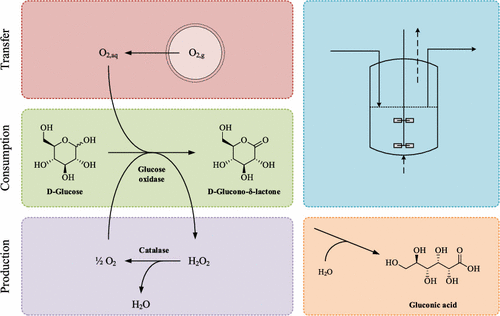当前位置:
X-MOL 学术
›
Org. Process Res. Dev.
›
论文详情
Our official English website, www.x-mol.net, welcomes your
feedback! (Note: you will need to create a separate account there.)
The Effect of Dissolved Oxygen on Kinetics during Continuous Biocatalytic Oxidations
Organic Process Research & Development ( IF 3.1 ) Pub Date : 2020-06-12 , DOI: 10.1021/acs.oprd.0c00140 Rowan M. Lindeque 1 , John M. Woodley 1
Organic Process Research & Development ( IF 3.1 ) Pub Date : 2020-06-12 , DOI: 10.1021/acs.oprd.0c00140 Rowan M. Lindeque 1 , John M. Woodley 1
Affiliation

|
Conventional oxidation catalysts frequently exhibit limited selectivity, restricting their use in industrial syntheses. In particular, for the continuous synthesis of complex active pharmaceutical ingredients the high selectivity of biocatalytic oxidations is attractive. However, due to their dependence on gaseous molecular oxygen, which is poorly water-soluble, such reactions are frequently limited by low dissolved oxygen concentrations. In order to better understand how oxygen limitation influences the effectiveness with which an enzyme can be used, the continuous oxidation of glucose into gluconic acid, by glucose oxidase, was studied in a continuous stirred tank reactor. Results showed that a 3-fold increase in the oxygen content of the feed gas improved the reaction rate by twice as much as a 10-fold increase in enzyme concentration, confirming that the reaction is most sensitive to dissolved oxygen concentrations. Therefore, the enzyme could, on average, be used four times more effectively at an enzyme concentration of 0.1 g·L–1 than at 1 g·L–1, due to higher dissolved oxygen concentrations at steady state. However, at feed gas compositions greater than 60% oxygen, reaction rates began to drop due to enzyme deactivation. It was also found that the measurement of mass transfer coefficients is significantly affected by media composition, which may lead to inaccurate predictions of reaction rate.
中文翻译:

连续生物催化氧化过程中溶解氧对动力学的影响
常规的氧化催化剂经常表现出有限的选择性,限制了它们在工业合成中的使用。特别地,对于连续合成复杂的活性药物成分,生物催化氧化的高选择性是有吸引力的。但是,由于它们对水溶性差的气态分子氧的依赖性,这种反应经常受到低溶解氧浓度的限制。为了更好地理解氧限制如何影响酶的使用效率,在连续搅拌釜反应器中研究了通过葡萄糖氧化酶将葡萄糖连续氧化为葡萄糖酸的方法。结果表明,进料气中氧含量增加3倍,反应速率提高了10倍,而酶浓度提高了两倍,证实该反应对溶解氧浓度最敏感。因此,在酶浓度为0.1 g·L的情况下,该酶平均可以有效地使用四次。–1比在1 g·L –1下要高,这是因为稳态下的溶解氧浓度更高。但是,在进料气中的氧气含量大于60%时,由于酶的失活,反应速率开始下降。还发现传质系数的测量受介质组成的显着影响,这可能导致反应速率的预测不准确。
更新日期:2020-06-12
中文翻译:

连续生物催化氧化过程中溶解氧对动力学的影响
常规的氧化催化剂经常表现出有限的选择性,限制了它们在工业合成中的使用。特别地,对于连续合成复杂的活性药物成分,生物催化氧化的高选择性是有吸引力的。但是,由于它们对水溶性差的气态分子氧的依赖性,这种反应经常受到低溶解氧浓度的限制。为了更好地理解氧限制如何影响酶的使用效率,在连续搅拌釜反应器中研究了通过葡萄糖氧化酶将葡萄糖连续氧化为葡萄糖酸的方法。结果表明,进料气中氧含量增加3倍,反应速率提高了10倍,而酶浓度提高了两倍,证实该反应对溶解氧浓度最敏感。因此,在酶浓度为0.1 g·L的情况下,该酶平均可以有效地使用四次。–1比在1 g·L –1下要高,这是因为稳态下的溶解氧浓度更高。但是,在进料气中的氧气含量大于60%时,由于酶的失活,反应速率开始下降。还发现传质系数的测量受介质组成的显着影响,这可能导致反应速率的预测不准确。










































 京公网安备 11010802027423号
京公网安备 11010802027423号